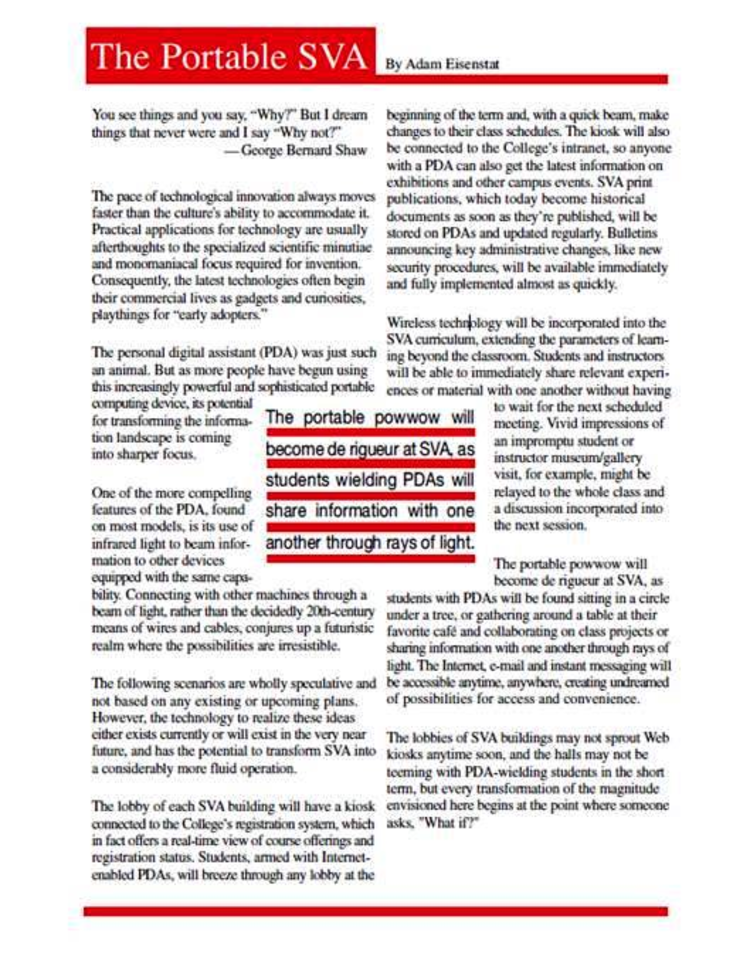
The Portable SVA (PDAs in the classroom)
Visual Arts Journal - January 29, 2016
Article on the innovative use of personal digital assistants (PDAs) at the School of Visual Arts (SVA), where I was the Director of Communications (see résumé).
The Portable SVA
You see things and you say, “Why?” But I dream
things that never were and I say “Why not?”
–George Bernard Shaw
The pace of technological innovation always moves faster than the culture's ability to accommodate it. Practical applications for technology are usually afterthoughts to the specialized scientific minutiae and monomaniacal focus required for invention. Consequently, the latest technologies often begin their commercial lives as gadgets and curiosities, playthings for "early adopters."
The personal digital assistant (PDA) was just such an animal. But as more people have begun using this increasingly powerful and sophisticated portable computing device, its potential for transforming the information landscape is coming into sharper focus.
One of the more compelling features of the PDA, found on most models, is its use of infrared light to beam information to other devices equipped with the same capability. Connecting with other machines through a beam of light, rather than the decidedly 20th-century means of wires and cables, conjures up a futuristic realm where the possibilities are irresistible.
The following scenarios are wholly speculative and not based on any existing or upcoming plans. However, the technology to realize these ideas either exists currently or will exist in the very near future, and has the potential to transform SVA into a considerably more fluid operation.
The lobby of each SVA building will have a kiosk connected to the College’s registration system, which in fact offers a real-time view of course offerings and registration status. Students, armed with Internet-enabled PDAs, will breeze through any lobby at the beginning of the term and, with a quick beam, make changes to their class schedules. The kiosk will also be connected to the College’s intranet, so anyone with a PDA can also get the latest information on exhibitions and other campus events. SVA print publications, which today become historical documents as soon as they’re published, will be stored on PDAs and updated regularly. Bulletins announcing key administrative changes, like new security procedures, will be available immediately and fully implemented almost as quickly.
Wireless technology will be incorporated into the SVA curriculum, extending the parameters of learning beyond the classroom. Students and instructors will be able to immediately share relevant experiences or material with one another without having to wait for the next scheduled meeting. Vivid impressions of an impromptu student or instructor museum/gallery visit, for example, might be relayed to the whole class and a discussion incorporated into the next session.
The portable powwow will become de rigueur at SVA, as students with PDAs will be found sitting in a circle under a tree, or gathering around a table at their favorite café and collaborating on class projects or sharing information with one another through rays of light. The Internet, e-mail and instant messaging will be accessible anytime, anywhere, creating undreamed of possibilities for access and convenience.
The lobbies of SVA buildings may not sprout Web kiosks anytime soon, and the halls may not be teeming with PDA-wielding students in the short term, but every transformation of the magnitude envisioned here begins at the point where someone asks, "What if?"
